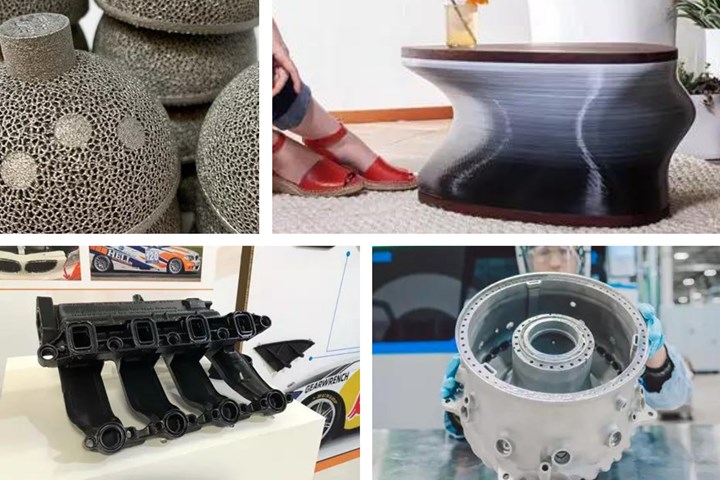Share





Additive manufacturing (AM) is arguably the broadest category of manufacturing out there. AM includes seven distinct families of 3D printing technologies, each containing many different varieties of the given process. It utilizes materials ranging from metal powder to liquid resins to composites, and delivers objects ranging from look-and-feel prototypes to all types of tooling to full-volume production runs. And, it is finding footholds in wide-ranging sectors, including aerospace, automotive, medical, defense, fabrication, architecture, consumer goods and more.

Whether in metals or polymers, for medical implants or aerospace parts, there can be hurdles to implementing additive manufacturing, as well as many advantages.
Top and bottom left images: Staff | Top right: Model No. | Bottom right: GE Additive
With so much to take in, it can be difficult for manufacturers to see the way forward with additive, or even how to think about bringing AM into their businesses. Over at Additive Manufacturing, sister publication to 91ÊÓƵÍøÕ¾ÎÛ, we’ve created an entry-level resource that breaks down the challenges and issues surrounding AM, but also the opportunities this technology stands to bring to its users.
to learn:
- What distinguishes the seven AM process families, and which techniques are most commonly used for production
- The various classes of materials it is possible to 3D print with
- Real-world use cases and applications for AM
- What to consider in developing an additive manufacturing workflow
- What equipment AM requires, beyond the printer
- How to think about the business side of 3D printing
- Trends that will drive AM farther, including artificial intelligence, distributed manufacturing and sustainability
Related Content
-
In Moldmaking, Mantle Process Addresses Lead Time and Talent Pool
A new process delivered through what looks like a standard machining center promises to streamline machining of injection mold cores and cavities and even answer the declining availability of toolmakers.
-
Digital Transparency in Machining Key to Multi-Site Additive Manufacturing
Cumberland Additive’s CNC programmer in Pennsylvania spends most of his time writing programs for machine tools in Texas.
-
OEMs Showcase Hybrid Manufacturing Applications
Mazak and Mastercam worked together to demonstrate the viability of hybrid additive/subtractive machining techniques at a recent event held in Florence, Kentucky.

.jpg;width=70;height=70;mode=crop)












